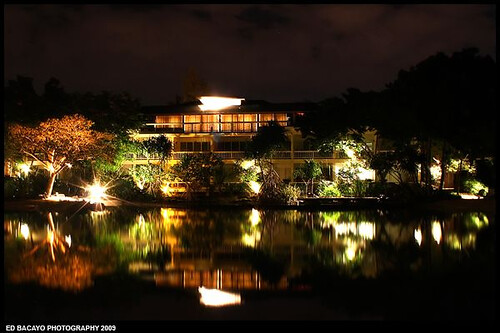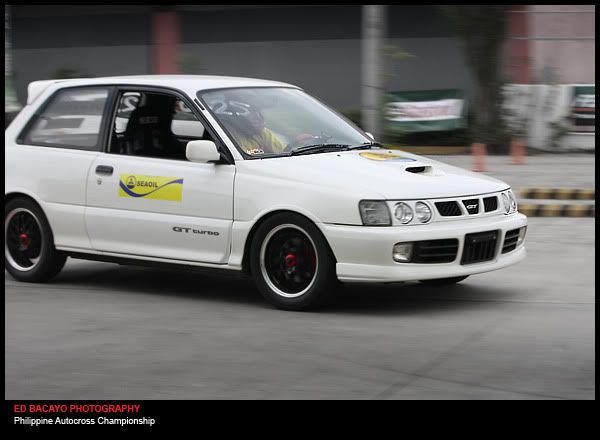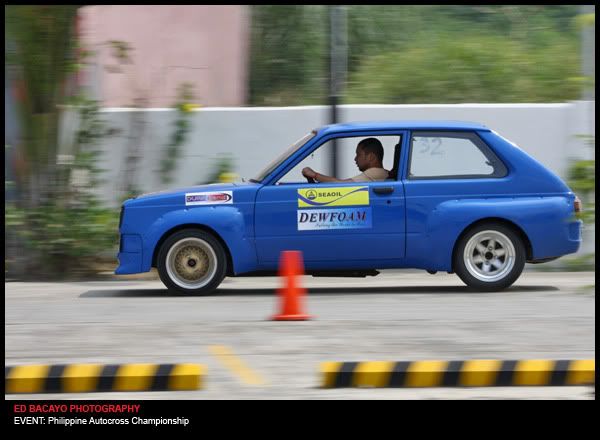In a previous article, we discussed how the aperture controls the exposure of an image. Again, exposure is basically controlled by 3 factors, that is the shutter speed, aperture, and the ISO. In this article, I'll discuss how the shutter speed affects exposure and when to use which shutter speeds. I'll also discuss creative uses like panning (this will be discussed in more detail in a different article) and also light streaks.
The shutter speed indicates the amount of time that the shutter remains open. When closed, the shutter covers the image sensor prohibiting light to enter. Shutter speed is expressed in seconds or fractions of a second (e.g. 1/60, 1/80, 1/100, 1/125, ..., 1/500, ...). The greater the denominator the faster the shutter speed. You normally use fast shutter speeds for moving subjects (as in sports photography) to freeze the action. Alternatively, for portrait photography, you can go as low as 1/60 without risk of motion blur. As you go lower, you increase the chance of getting a blurred picture due to camera shake; this is something you generally would like to avoid.
The rule of thumb is you'd want the shutter speed not slower than 1 / (focal length) when shooting hand held. This means that if you are using a 50mm lens or if your zoom lens is set to 50mm you will need to set your shutter speed to at least 1/50 (or 1/60). This is to avoid blurred photos due to camera shake. Some lenses equipped with IS (Image Stabilizer - Canon) or VR (Vibration Reduction - Nikon) will allow you to set the shutter speed, theoretically, 3 to 4 stops lower than this desired setting. However, this does not prevent blurred photos due to subject movement. If you have already opened up your aperture but the required shutter speed is still slow, you can increase your ISO setting until you get the desired shutter speed. There is also an option to use flash. There's no defined shutter speed you need to use. When shooting, you need to consider whether your subject is moving (and the speed that the subject is moving) or if your subject is posed or standing still. You'll need to use faster shutter speeds if the subject is moving.
Panning
Generally, you'd want the fastest shutter speed possible. However, there are instances that you'd want a slower shutter speed to show movement. When you shoot a moving object (e.g. car, a person riding a bicycle) using a fast shutter speed, the subject will seem as if it is post or standing still. When you want to show movement, you'd be using a slower shutter speed. The technique is to pan the camera while pressing the shutter button half way and making sure that the subject is in the center of the frame. You'll also need to set your auto focus (AF) to AI-Servo so that the camera will try to get the focus in real time while your subject is moving. By doing this, the subject will remain in focus while the background will become a blur. This is a good technique which will show subject movement. A good technique is to start following the subject even before it reaches the area where you want to shoot; meaning, hold down that shutter button half way and track the target ahead of time. You then need to follow your subject, press the shutter button fully when you have the composition you like, and continue to pan even after the shutter button is pressed.
Have you ever seen those shots where you just see light streaks on the streets while other objects like street lamps are still in focus? These types of shots are done with a longer exposure (e.g. 1 second or longer). In some cases, you can even use the BULB mode. The bulb mode is when the shutter remains open for as long as the shutter button is pressed. In this type of shot, you will need to mount the camera on a tripod. Never try this shot hand held. You can try to support your camera on a camera bag or a bean bag but a sturdy tripod is the best. Also, make sure not to push the shutter button to take the shot. Either use the timer function or use a remote control. This is because, at slow shutter speeds, tiny camera movement will almost always ruin the shot for you. I'd suggest using ISO 100 (for the least amount of digital noise). You can give this a try, set your camera to Aperture priority (Av for Canon), set the ISO 100, set your aperture depending on the depth of field you want to capture (e.g. f/11), set the timer to 2 seconds, compose, and then take the shot. I suggest using this method for beginners before using full manual. You can then just memorize the settings that the camera gave you, set your camera to manual mode, and then play with different shutter speeds and see what happens. Also note that some cameras have a feature to allow noise reduction on long exposures. Try to check if your camera has this and try turning it on.






0 comments:
Post a Comment